People
TAMU

Ping Chang
iHESP Director and PI
Dr. Chang is a Professor in both the Department of Oceanography and of Atmospheric Sciences at Texas A&M University (TAMU) and the holder of the Louise & Elizabeth Scherck Endowed Chair in Oceanography. He received his Ph.D. from the Princeton University in 1988. His expertise lies in climate dynamics and climate prediction, as well as high-resolution global and regional climate modeling. He leads a research group in global and regional climate modeling studies at TAMU and has developed research collaborations with many institutions in the US and abroad. His research involves the understanding of climate variability and predictability, including El Niño-Southern Oscillation (ENSO), Tropical Atlantic Variability (TAV) and Atlantic Meridional Overturning Circulation (AMOC)/Atlantic Multidecadal Oscillation (AMO) and how these modes of climate variability affect weather extremes, such as tropical cyclones and atmospheric rivers. He published over 130 refereed journal articles (http://scholar.google.com/citations?User=ciw1niuaaaaj&hl=en). His research has been used to guide the design of major international research programs, such as the Climate Variability and Predictability (CLIVAR) (http://www.clivar.org). He co-chaired the International CLIVAR Atlantic Research Panel (http://www.clivar.org/clivar-panels/atlantic) and was a contributing author to three chapters in the Fifth Assessment Report (AR5) of the Intergovernmental Panel on Climate Change (IPCC).
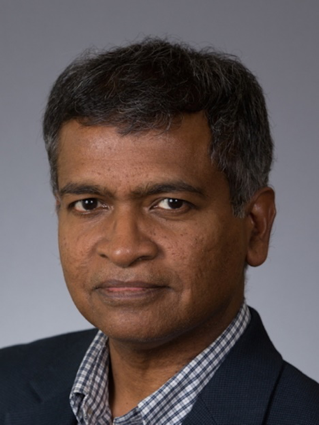
R. Saravanan
iHESP Steering Committee Member and Scientist
Dr. Saravanan is a Professor and Department Head of Atmospheric Sciences at Texas A&M University. He received his Ph.D. from the Princeton University in 1990. His research career has focused on atmospheric dynamics, climate modeling, and ocean-atmosphere interaction. He uses global and regional models and statistical methods to study global modes of low-frequency variability, tropical cyclones and the interaction between ocean eddies and mid-latitude storms. He has received the College of Geoscience’s (Texas A&M University) Distinguished Research Award in 2015. He has been a member of the Prediction and Research Moored Array in the Atlantic (PIRATA) Science Steering Committee (2010-2018), a member of the American Meteorological Society Committee on Climate Variability and Change (2014-2017), a member of the National Research Council (NRC) Committee on the Assessment of Intra-seasonal to Inter-annual Climate Prediction and Predictability (2009) and editor, American Meteorological Society Journal of Climate (2007-2010).

Jaison Kurian
iHESP Assistant Research Scientist
Dr. Kurian is an Assistant Research Scientist in the Department of Oceanography at Texas A&M University. He did his PhD in Oceanography at the Indian Institute of Science, Bangalore and Post-Doctoral work at the University of California, Los Angeles. His current research focuses on impact of ocean mesoscale eddies and upper ocean heat content on tropical cyclones and development and application of the Regional Community Earth System (RCESM) model. His area of interests includes coupled ocean-atmosphere modeling, properties and dynamics of oceanic eddies, tropical cyclones, impact of freshwater input on upper ocean processes and data visualization methods and tools. Outside of work, he likes photography and driving.

Yun Liu
iHESP Assistant Research Scientist
Dr. Liu is an Assistant Research Scientist in the Department of Oceanography at Texas A&M University. In the iHESP project, he works on developing an ensemble coupled data assimilation system for the Regional Community Earth System Model. He received his Ph.D. in Atmospheric and Oceanic Sciences from University of Wisconsin-Madison in 2014. He did his Post-Doctoral work at University of Maryland. His current research focuses on coupled data assimilation, ensemble-based parameter estimation, climate variability and dynamics and prediction of coupled ocean-atmosphere-land system.
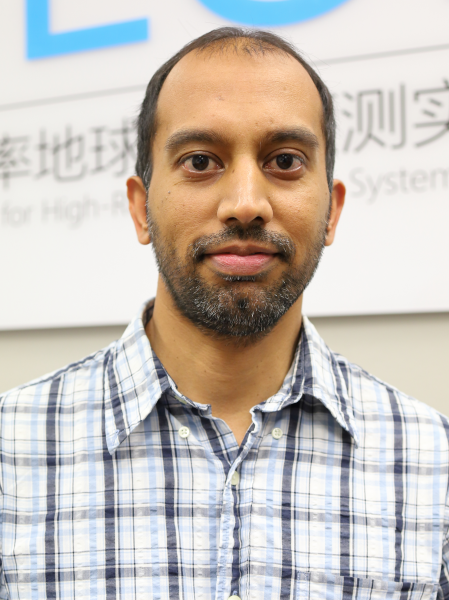
Sanjiv Ramachandran
iHESP Assistant Research Scientist
Dr. Ramachandran is an Assistant Research Scientist in the Department of Oceanography at Texas A&M University. He was previously employed as a Research Assistant Professor at the University of Massachusetts, Dartmouth. He uses numerical models and in-situ observations to explore submesoscale processes in the upper ocean and its implications for air-sea interactions. His most recent work involves the study of such processes in the northern Indian Ocean during the winter and summer monsoons. He has also worked on mesoscale-submesoscale coupling and the sensitivity of submesoscale-permitting simulations to subgrid turbulence parameterizations. He earned his Ph.D. from Pennsylvania State University, in large-eddy simulation of the daytime and nocturnal atmospheric boundary layers to evaluate the performance of second-order subgrid turbulence models in the so-called 'terra incognita' regime, where the horizontal grid spacing scales with the integral length scale of turbulence. He received his MS degree in Aerospace Engineering from Pennsylvania State University for analyzing an idealized model of an 'impact damper' and identifying regions in the parameter space corresponding to maximum damping. He received his B. Tech (Bachelor of Technology) degree in Aerospace Engineering from the Indian Institute of Technology, Mumbai.

Xue Liu
iHESP Assistant Research Scientist
Dr. Liu is an Assistant Research Scientist in the Department of Oceanography at Texas A&M University. In iHESP project, she works on the effect of ocean mesoscale eddies on the mid-latitude storm tracks and their predictability using numerical models and statistical methods. She obtained her Ph.D. in Physical Oceanography from Texas A&M University in 2018. Her scientific interests include mesoscale air-sea interactions, climate predictions, climate modeling simulations and high-resolution observations. Her work includes carrying out high-resolution climate model simulations to understand the role of ocean mesoscale eddies in subseasonal-to-decadal climate variability and predictability, exploring the mechanisms of ocean mesoscale eddy-atmosphere in the tropics and subtropics and improving the model simulations by comparing the model simulations to high-resolution observations.

Dan Fu
iHESP Assistant Research Scientist
Dr. Fu is an Assistant Research Scientist in the Department of Oceanography at Texas A&M University. In iHESP project, he works on climate extremes and subseasonal-to-seasonal predictions. He received his Ph.D. in Oceanography from Texas A&M University in 2018. His area of expertise and experience includes large-scale air-sea interaction, tropical cyclone dynamics, and predictability in various timescales. He has extensive experience in numerical modeling systems, from coupled regional models and general circulation models. His current research focuses on predictability of weather and climate extremes, like tropical cyclones and atmospheric rivers, and variability in synoptic-to-decadal time scales using dynamical models and statistical-dynamical hybrid approaches.

Abishek Gopal
iHESP Assistant Research Scientist
Dr. Gopal is an Assistant Research Scientist in the Department of Oceanography at Texas A&M University. At iHESP, he will liaison with the software engineering team at NCAR to develop and optimize components of the Community Earth System Model (CESM) for different computational architectures. He obtained his Ph.D. in Mechanical Engineering from the University of Maryland in 2019, with a focus on computational reacting flows. His research interests include applied fluid dynamics, high-performance computing, turbulent flows, and critical phenomena in thermodynamics. His dissertation focused on studying the effects of critical thermodynamic phenomena on reacting flows using numerical methods. He holds a Bachelor’s degree in Computer Science from Anna University, India. At iHESP, he will assist in the development of a regional community earth system model (R-CESM). The work will also involve porting and optimizing the existing CESM code to various architectures. Further, he will also assist in the performance optimization of diagnostic software.

Robert Korty
iHESP Scientist
Dr. Korty is an Associate Professor in the Department of Atmospheric Sciences at Texas A&M University. His research interests in climate dynamics are focused on how hurricanes and convection change with climate. He has applied paleoclimate model simulations to contemporary questions related to how the weather varies and changes with climate, and he has worked with geologists on reconstructions of past storm activity. He currently serves on the American Meteorological Society's Standing Committee for Climate Variability and Change. He has also led an NSF-sponsored Research Experience for Undergraduates, and incorporates opportunities for undergraduate students to participate in projects.

Amanda Black
iHESP Postdoctoral Associate
Dr. Black is a Post-Doctoral Research Associate in the Department of Oceanography at Texas A&M University. She received her Ph.D. in Meteorology from Iowa State University in 2018, and was previously employed as a postdoctoral research fellow at CSIRO in Hobart, Tasmania. Her research interests include better understanding extreme weather events and ocean-atmosphere interactions. Her focus at iHESP includes diagnostically evaluating mesoscale ocean processes and their interaction with the atmosphere through the lens of decadal climate prediction, as well as evaluation of changes in model predictive skills and their dynamical causes.

Nick Szapiro
iHESP Postdoctoral Associate
Dr. Szapiro is a postdoctoral research associate in the Department of Oceanography at Texas A&M University. He received a Ph.D. in meteorology from the University of Oklahoma, exploring the dynamics, simulation, and potential for individual weather features to impact climate extremes. Moving closer to the Arctic, he focused on developing coupled, high-resolution models and predictions for the European Arctic as a research scientist in the ocean and ice division of MET Norway. His research centers on developing causal understanding of linkages throughout the Earth system using controlled experiments with coupled, variable resolution Earth system models.
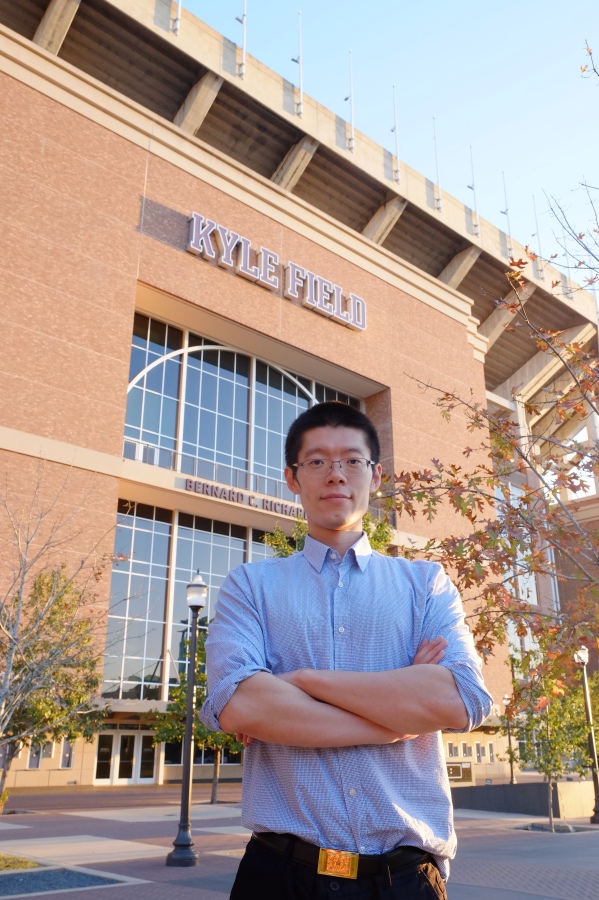
Dapeng Li
iHESP Postdoctoral Associate
Dr. Li is a Post-Doctoral Research Associate in the Department of Oceanography at Texas A&M University. He received his Ph.D. in Oceanography from Texas A&M University in 2019, based on a dissertation characterizing turbulence mixing driven by surface winds, tides, and internal waves. He received his B.S. in Marine Sciences from the Ocean University of China in 2014. In iHESP project, he works on 1) improving the representation of oceanic turbulence mixing, sub-mesoscale processes and mesoscale eddies in climate models; 2) carrying out an in-depth analysis of ocean observations and high- resolution climate simulations. Outside of work, he enjoys traveling and cooking.

Achim Stössel
iHESP Scientist
Dr. Stössel is an Associate Professor in the Department of Oceanography at Texas A&M University. He received his Ph.D. from the University of Hamburg in 1990, based on a dissertation completed at the Max-Planck-Institute for Meteorology (MPI-M). His current research is on the representation of the Southern Ocean in high-resolution Earth System Models (ESMs). He maintains collaboration with the COSIM group at the Los Alamos National Laboratory, and with the Ocean in ESMs group at MPI-M.

Jian Tao
iHESP Scientist
Jian Tao is an Assistant Professor in the Department of Visualization at Texas A&M University and the Assistant Director for Project Development at the Texas A&M Institute of Data Science.
He is an NVIDIA DLI University Ambassador and XSEDE Campus Champion at Texas A&M and a contributor to the SPEC CPU 2017 benchmark suite. In 2018, Jian Tao led the Texas A&M team to the final of both the ASC18 and SC18 student cluster competitions. He currently serves as a faculty advisor for the Texas A&M team for the SAE/GM AutoDrive Challenge Competition.

Qiuying Zhang
iHESP Graduate Student
Qiuying is a graduate student in the Department of Oceanography at Texas A&M University. She received her Bachelors and Master Degrees in Physical Oceanography from the Ocean University of China. Her current research focuses on improving the skill of decadal climate predictions in the Community Earth System Model (CESM). She uses statistical and data analysis methods to test and evaluate fully coupled high-resolution CESM simulations.
NCAR

Gokhan Danabasoglu
iHESP Steering Committee Member, Co-PI, and Scientist
Dr. Danabasoglu is a co-lead at the International Laboratory for High-resolution Earth System Prediction (iHESP) project. He is a Senior Scientist at National Center for Atmospheric Research (NCAR). He received his Ph.D in Aerospace Engineering Sciences from the University of Colorado, Boulder. He is an expert in ocean and earth system modeling. His research focuses primarily on understanding the role of the oceans in the earth’s climate system and computational modeling of the ocean, including developing parameterizations to represent unresolved physics in ocean general circulation models. His specific areas of research include investigations of mechanisms, prediction, and impacts of inter-annual to decadal time scale climate variability, particularly associated with oceanic circulations. He received the Community Earth System Model (CESM) Distinguished Achievement Award in 2009. He served as a co-chair of the CESM Ocean Model Working Group and a co-chair of the international CLIVAR (Variability and predictability of the ocean-atmosphere system) Ocean Model Development Panel. Currently he serves as the Chief Scientist for the CESM and as the chair of the US CLIVAR Atlantic Meridional Overturning Circulation (AMOC) Science Team. He also serves on the international CLIVAR Scientific Steering Committee and the World Climate Research Program (WCRP) Modeling Advisory Council.
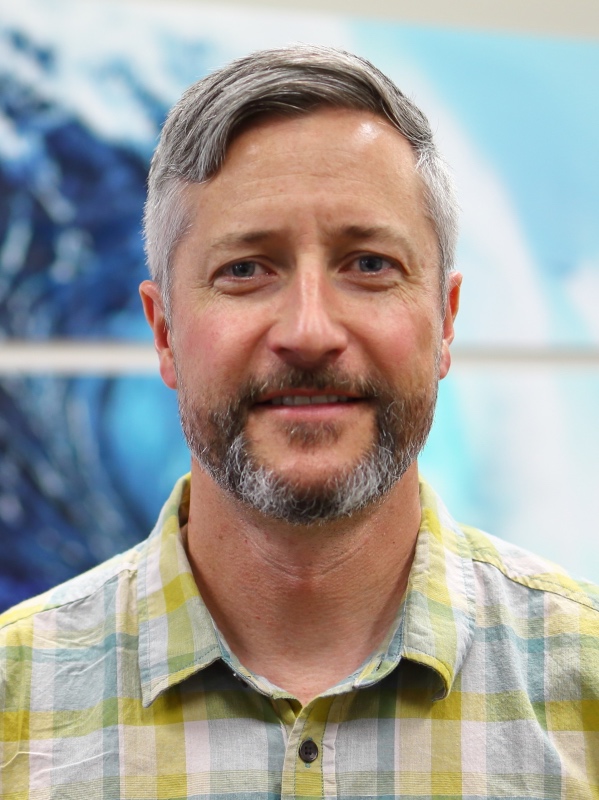
Stephen Yeager
iHESP Steering Committee Member and Scientist
Dr. Yeager co-leads the International Laboratory for High-resolution Earth System Prediction (iHESP) project. He is a member of the Oceanography Section in National Center for Atmospheric Research’s (NCAR) Climate and Global Dynamics (CGD) Laboratory. He obtained degrees in Physics from Dartmouth College and Brown University before completing a Ph.D in Atmospheric and Oceanic Science from the University of Colorado, Boulder. Since joining NCAR 20 years ago, he has contributed to the general development and analysis of the CESM ocean model, served as the scientific liaison for the CESM Ocean Model Working Group, helped to develop widely-used forcing datasets for ocean and sea-ice modeling, and published on a wide range of topics related to ocean variability and the role of the ocean in the climate system. His current research is focused on understanding how ocean dynamics contribute to climate variability and predictability on long timescales, and he has led several recent studies exploring the capacity for initialized decadal climate prediction using the CESM model. He served for several years on the executive committee of the US AMOC Science Team. He is currently a co-lead of CGD’s Earth System Prediction Project, a co-chair of WCRP’s Decadal Climate Prediction Project, and a member of the CLIVAR Ocean Model Development Panel.
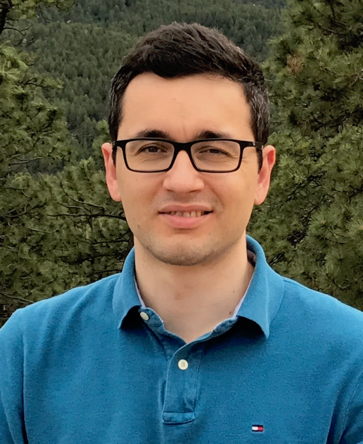
Alper Altuntas
iHESP Software Engineer
Dr. Altuntas is a software engineer at the Climate & Global Dynamics Laboratory of the National Center for Atmospheric Research (NCAR). He received his Ph.D. in Civil Engineering from North Carolina State University. At NCAR, he participates in the development, maintenance, and evaluation of existing and future ocean model components of the Community Earth System Model (CESM). His areas of interests include ocean modeling, formal methods, and high-performance computing.

Julio Bacmeister
iHESP Scientist
Dr. Bacmeister received his Ph. D. in 1987 and has worked in a number of areas related to atmospheric modeling and parameterization. His research interests include global modeling of the atmosphere at "high" resolution. High resolution in the context of global models currently means horizontal grid spacing on the order of tens of kilometers. In this resolution range global models begin to simulate some important mesoscale features, such as tropical cyclones, but most convective motion in the atmosphere is still poorly resolved. Unfortunately, parameterizations of deep convection developed for climate models at much coarser resolution also perform poorly in this setting, often interfering with incipient mesoscale "organization". He is trying to understand the interactions between parameterized and resolved dynamics in these simulations, and to help develop better methods for representing deep convection in global models.

David Bailey
iHESP Scientist
Dr. Bailey is an Associate Scientist at the National Center for Atmospheric Research (NCAR). David has a Bachelor of Mathematics from the University of Waterloo, a Master of Science in Oceanography and Applied Mathematics from the University of British Columbia and a Ph.D in Astrophysical, Planetary, and Atmospheric Sciences from the University of Colorado, Boulder. He serves as a community liaison for the Community Earth System Model (CESM). Between his Masters and PhD, he worked as a research programmer with Amanda Lynch at the University of Alaska Fairbanks (UAF). It was at UAF where he became interested in coupled modelling and sea ice and went on to his PhD studies on Southern Ocean polynyas with Professor Lynch while she was at the University of Colorado. He is interested in sea ice modelling and coupled atmosphere-sea ice-ocean interactions. He was also involved in an unpublished study to investigate the potential impacts of black carbon from ships traversing the Arctic using the CESM. He is currently involved in a project with Siri Veland, Amanda Lynch, Michael Goldstein, and Scott Stephenson to revisit this earlier study, but also to look beyond the physical system into some of the economic implications.

Allison Baker
iHESP Scientist
Dr. Baker is a Project Scientist III in the Application Scalability and Performance group in the Technology Development Division at NCAR. She earned her Ph.D. in Applied Mathematics from the University of Colorado at Boulder in 2003, and her bachelor's degree in Mechanical Engineering from Rice University. She works primarily with the Community Earth System Model (CESM). Her research interests include high-performance computing, software for scientific computing, performance analysis, iterative linear solvers, and, more recently, data compression and verification techniques. Before joining NCAR in 2012, she worked at the Center for Applied Scientific Computing (CASC) at Livermore National Laboratory, where she was primarily involved with the hypre software project, a library of high-performance preconditioners, with a focus on parallel algebraic multigrid methods and exascale computing.

Frederic Castruccio
iHESP Scientist
Dr. Castruccio is a member of the Oceanography Section of the Climate & Global Dynamics (CGD) Laboratory at NCAR. He received his Masters in Marine Sciences from the Mediterranean University (Marseille, France), and a Ph.D. in Physical Oceanography from the Joseph Fourier University (Grenoble, France). Since joining NCAR, his research has focused on the modelling and analysis of ocean dynamics and its key contributions to climate variability. He uses a combination of numerical models, observation and data assimilation to create realistic simulations of the global and regional ocean circulation, that are relevant to describe the ocean and sea-ice variability and to study the dynamical processes that generate variability in the ocean over a wide range of spatial and temporal scales. He also works with marine biologists to study how does the changes in ocean dynamics and thermodynamics affect marine ecosystems. His current work focuses on the role of the ocean in decadal variability and the importance of decadal variability in improving decadal climate predictions.
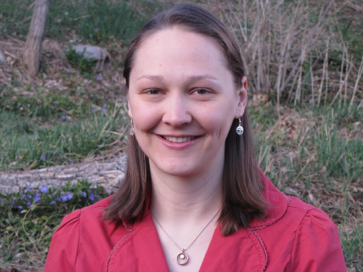
Alice K. DuVivier
iHESP Scientist
Dr. DuVivier is a member of the Paleo & Polar Climate Section in National Center for Atmospheric Research’s (NCAR) Climate and Global Dynamics (CGD) Laboratory. She received her Ph.D in Atmospheric and Oceanic Sciences from University of Colorado, Boulder in 2015. She is interested in high latitude surface exchanges of energy, momentum, and moisture between the sea ice, atmosphere, and ocean and the effects of these exchanges on the climate system. Her work involves using coupled earth system models to understand feedbacks between the earth system components and observations to validate and improve modeled representation of these processes. She is part of the Community Earth System Model (CESM) and CICE sea ice model development teams.

Jim Edwards
iHESP Software Engineer
Mr. Edwards is a Senior Software Engineer in the Community Earth System Model (CESM) software engineering group (CSEG) at NCAR. Prior to joining CSEG, he was an NCAR high performance applications consultant for IBM Corporation. He is a lead developer of the Community Infrastructure for Modeling Earth (CIME) and Parallel IO libraries.
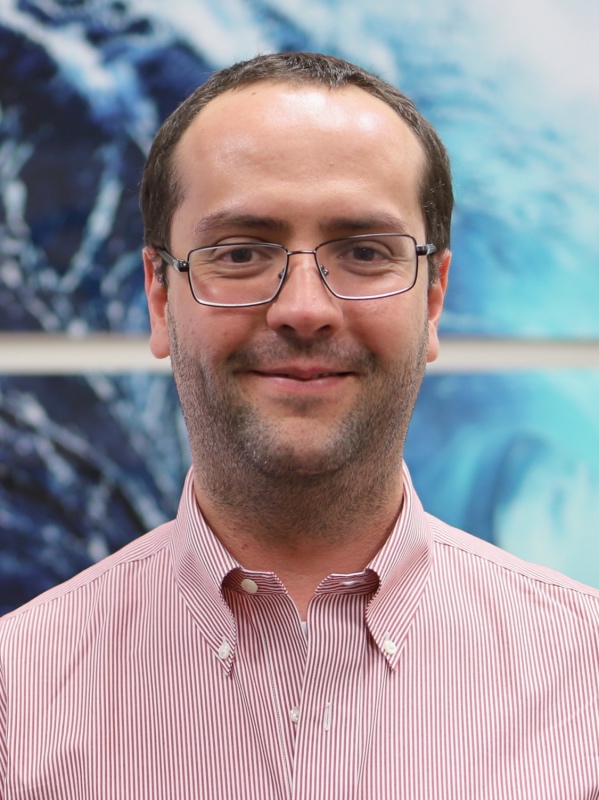
Lucas Laurindo
iHESP Post-Doctoral Fellow
Dr. Laurindo will join NCAR & the International Laboratory for High-resolution Earth System Prediction (iHESP) project as a ASP Post-Doctoral fellow in January, 2020. He is currently a Post-Doctoral Associate at the University of Miami Rosenstiel School of Marine and Atmospheric Science (RSMAS). He obtained his PhD in Meteorology and Physical Oceanography in May 2018. His dissertation combined drifter and satellite observations to investigate the air-sea exchange of mechanical energy, focusing on the role of air-sea coupling mechanisms operating over the ocean mesoscales in mediating the energy fluxes. His postdoctoral research expands on the results of his dissertation by using observations and climate model simulations to explore how ocean phenomena can drive the air-sea coupling characteristics revealed by satellite data, and the feedbacks arising from this interaction to variability in both mediums.

Nan Rosenbloom
iHESP Scientist
Dr. Rosenbloom provides scientific and technical support for multiple projects within the section. One of her primary technical roles is to implement and support scientific model simulations using the CESM model. These runs are conducted on multiple High Performance Computer platforms including the Argonne Leadership Computing Facility (ALCF), the National Energy Research Scientific Computing Center (NERSC), and the National Center for Supercomputing Applications (NCSA), as well as the NCAR-Wyoming Supercomputing Center (NWSC). She also works on projects include orchestrating and conducting ensembles of high resolution CESM experiments. Analysis of these high resolution simulations focuses on the effect of climate change on the frequency, duration and distribution of mid-latitude storm tracks and tropical cyclones. Another topic she works on is the effects of regionally forced ocean temperatures on climate variability and decadal predictabilities.

Justin Small
iHESP Scientist
Dr. Small is a member of the Oceanography Section in National Center for Atmospheric Research’s (NCAR) Climate and Global Dynamics (CGD) Laboratory. He received his Masters from the University of Reading on atmosphere storm tracks, and a Ph.D. from the University of Southampton on oceanic internal waves, which was followed by a postdoctoral fellowship at the International Pacific Research Center, Hawaii studying Tropical Instability Waves. At iHESP, Dr. Small plans to work on low-frequency variability and air-sea coupling in high-resolution global models. The focus of his research career is on air-sea interaction and the role of the ocean in climate variability. He uses high-resolution global and regional climate models to study processes such as coastal upwelling, atmosphere storm tracks, frontal-scale air-sea interaction, ocean mixing, and intrinsic variability in the ocean. He led a team that performed the first 100 year simulation of high-resolution Community Earth System Model 1 (CESM1), which included an eddy-resolving ocean model and a 25 km atmosphere model. His previous roles include Chair of the AMS Air-Sea Interaction committee during 2013-2016.
QNLM

Fangli Qiao
iHESP Co-PI and Scientist
Dr. Qiao received his Ph.D. degree in physical oceanography from the Ocean University of China, Qingdao, China. He has published more than 200 peer-reviewed journal papers. He and his colleagues developed the high-efficiency paralleled surface wave model recently with more than 10 million CPU cores. His current research activities include ocean mixing and air-sea interaction, the development of new ocean circulation models and climate models by including surface waves, and marine ecosystem dynamics. Dr. Qiao is the Editorial Board Member of Journal of Marine Systems, Ocean Modelling, and Acta Oceanologica Sinica. Due to his excellence in research, he has received many academic awards including the Wooster Awards of North Pacific Marine Science Organization and Outstanding Scientist of IOC/Sub-Commission for the Western Pacific in 2014, the New Century Talents National Candidate in 2007, and the Ninth China Youth Science and Technology Prize in 2006.

Shaoqing Zhang
iHESP Co-PI and Scientist
Dr. Zhang is a Senior Professor at the Key Laboratory of Physical Oceanography at Ocean University of China (OUC). His research work focuses on coupled ocean-atmosphere modeling, coupled data assimilation, coupled earth system predictability and parameter estimation in earth system models. He has received several awards for his work and scientific contributions, including the 2014 Gold Medal award for Development of Science and Technology from US Department of Commerce, USA. He also serves as a Distinguished Scientist at Qingdao Pilot National Laboratory of Marine Science and Technology (QNLM).

Yinglai Jia
iHESP Scientist
Dr. Jia is an Associate Professor in the College of Oceanic and Atmospheric Sciences at Ocean University of China (OUC). She received her Ph.D in Physical Oceanography from OUC in 2002. Her research focus on the impact of mesoscale oceanic eddies in western boundary current extension region on the atmospheric processes. She uses Community Atmospheric Model (CAM5) for her research work and develops methods for efficient high-resolution coupled modeling using slab ocean model. Her current research focus on the impact of mesoscale sea surface temperature (SST) variability on atmospheric dynamics in western boundary current extension regions.

Zhao Jing
iHESP Scientist
Dr. Jing is a Professor in the Key Laboratory of Physical Oceanography at Ocean University of China. He obtained his Ph.D in Oceanography from Texas A&M University. He has broad research interests, including near-inertial internal waves and their contribution to diapycnal mixing, ocean mesoscale eddy-atmosphere interactions and their impact on the ocean energetics, as well as submesoscale dynamics.
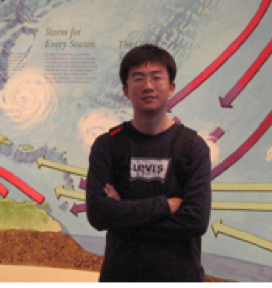
Mingkui Li
iHESP Scientist
Dr. Mingkui is an Associate Professor in the Key Laboratory of Physical Oceanography at Ocean University of China. He is also a member of Laboratory for Ocean Dynamics and Climate, Pilot National Laboratory for Marine Science and Technology. The major areas of his work includes regional climate modeling, developing data products from high-resolution model simulations and developing automated data visualization tools and procedures for model outputs.

Xiaohui Ma
iHESP Scientist
Dr. Ma is a Professor in the Key Laboratory of Physical Oceanography at Ocean University of China (OUC). She obtained her Ph.D in Oceanography in 2014 from Texas A&M University (TAMU). She did her Post-Doctoral work at TAMU from 2014-2016. Her research focuses on frontal and mesoscale air-sea interaction, climate variability, and high-resolution numerical modeling.
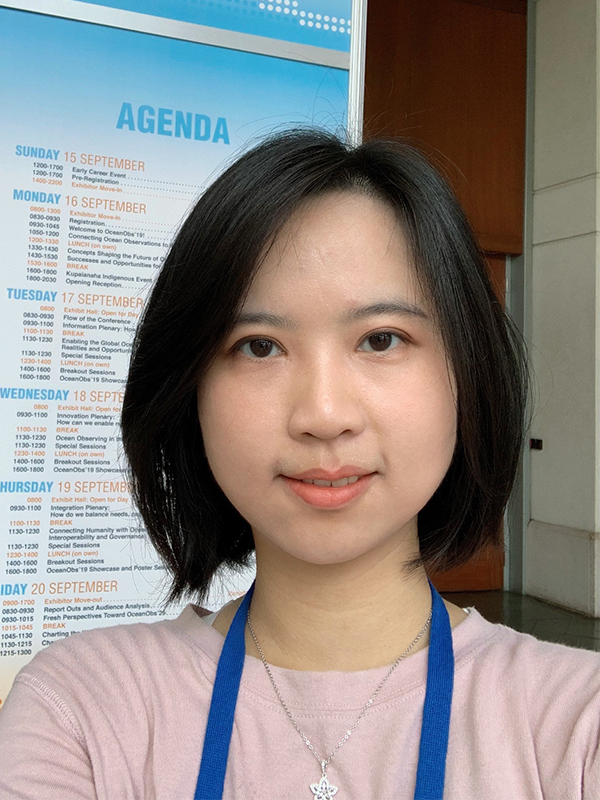
Bolan Gan
iHESP Scientist
Dr. Gan is a Professor in the Key Laboratory of Physical Oceanography at Ocean University of China (OUC). She received her Ph.D in Physical Oceanography from OUC. Her research interest is to understand the role of ocean dynamic processes in climate variability and long-term change. She is currently focused on the impact of ocean eddies and fronts on the midlatitude and polar climate system, as well as their potential role in modulating regional climate change.
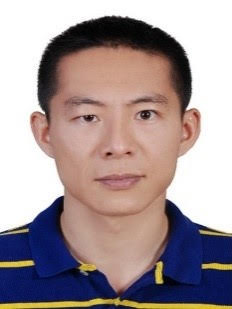
Yang Gao
iHESP Scientist
Dr. Gao is a Professor in the Ministry of Education Key Laboratory of Marine Environment and Ecology at Ocean University of China (OUC). He obtained his Ph.D. in 2012 from University of Tennessee, and did his Post-Doctoral work from 2013-2016 at Pacific Northwest National Laboratory (PNNL). His research primarily focuses on the development of dynamical downscaling high resolution modeling system, investigation of the mechanism on how climate change modulates the extreme weather events including heat waves and extreme precipitation, as well as the impact of climate extremes on air pollution. He received the PNNL Outstanding Performance Award in 2015 and Tsinghua University - Inspur Group Earth Science Young Talent Award in 2020.

Haiyuan Yang
iHESP Scientist
Dr. Yang is an assistant professor of physical oceanography in the Physical Ocenography Laboratory at the Ocean University of China. By focusing on the North Pacific Ocean, Dr. Yang strives to understand the role of the ocean in the earth’s climate system. He uses a combination of state-of-the-art observations, models, and theory to study the dynamics of multi-scale oceanic processes and their interaction with atmosphere, with a focus on the roles that mesoscale eddies play in the coupled system.
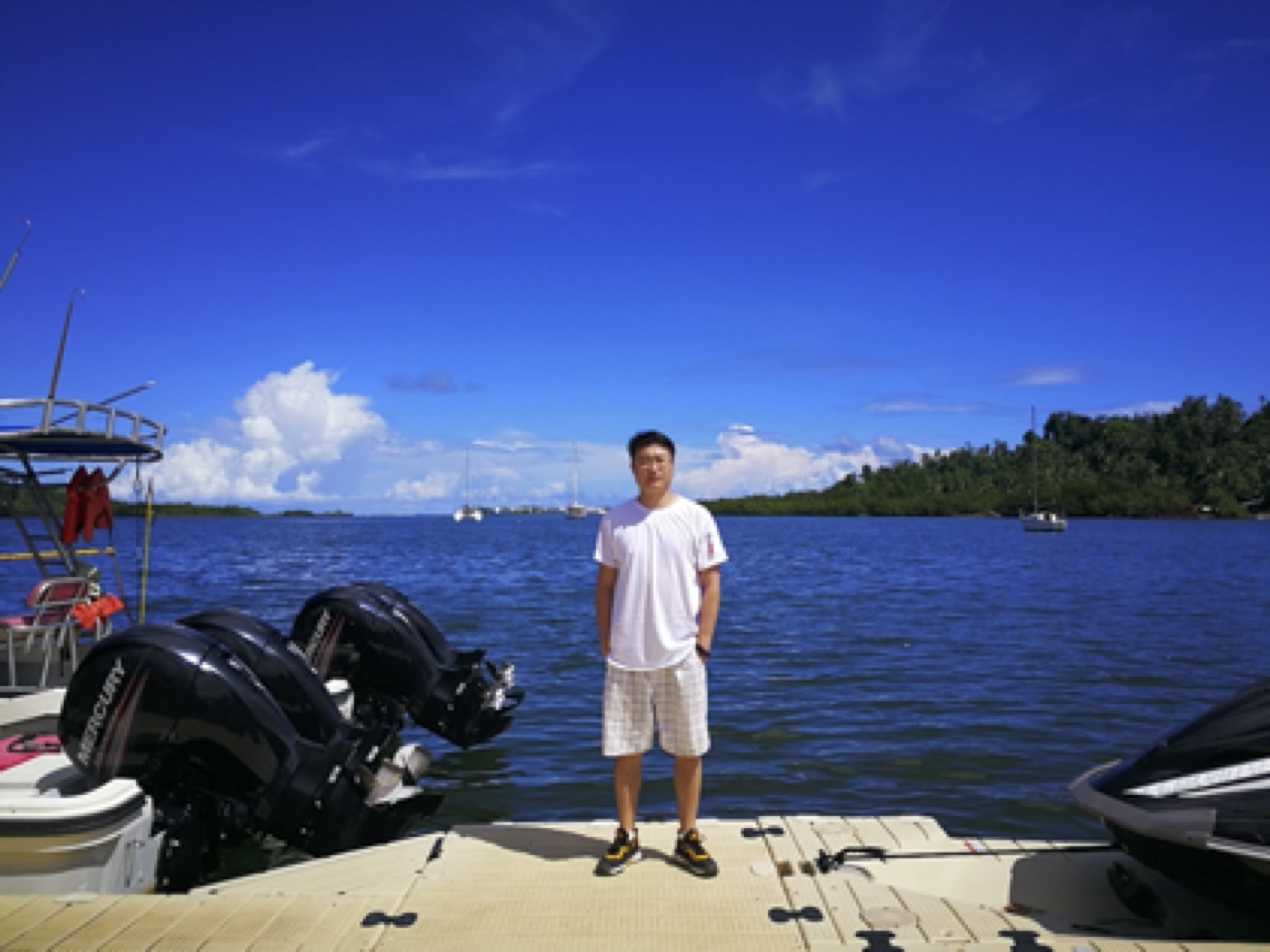
Shengpeng Wang
iHESP Post-Doctoral Scholar
Dr. Wang is currently doing his postdoctoral research on oceanography and climate sciences at the Ocean University of China. His research interests include mesoscale and sub-mesoscale dynamics, energy cascade and turbulent dynamics, role of mesoscale and sub-mesoscale motions in the large-scale circulations and climate variability. For his PhD thesis, Dr. Wang studied nonlinear energy cascade in ocean, but now he works mostly on issues related to oceanic eddies’ climate effects using a combination of dynamical theory, climate models, and available observations.

Weiwei Ma
iHESP Post-Doctoral Scholar
Dr. Ma is a Post-Doctoral Scholar at the Ocean University of China (OUC). He received his Ph.D in Physical Oceanography from OUC in 2017. His primary research interest is to study the long-term changes of sea surface temperature in East China Sea. He uses both ocean only and ocean-atmosphere coupled models for his work. He will focus on improving the stability of a high resolution regional coupled numerical forecasting system and the skill of predictions in the Pacific, Indian Ocean and South China Sea at iHESP.

Zengrui Rong
iHESP Scientist
Dr. Rong is an Associate Professor at Ocean University of China (OUC). He received his Ph.D from OUC through a joint program between OUC and UMCES (U. S.) and undertook his Post-Doctoral training at Texas A&M. His research interests are river plume dynamics, coastal and shelf circulation, and biology-physical interactions. He co-leads two joint-projects between OUC and WHOI, which focus on the green tide (Ulva Prolifera) dynamics and carbon cycle in the East China Sea.

Xiaolin Yu
iHESP Research Scientist
Dr. Yu is a Research Scientist at Ocean University of China. His work focus on the simulation and prediction of major ocean and coupled air-sea processes in the Western Pacific Ocean and Asian marginal seas. He has made significant contributions to the design, implementation and evaluation of the high resolution coupled prediction system at the Pilot National Laboratory for Marine Science and Technology in Qingdao, China. He is the main developer of the variational data assimilation core of this system.

Hong Wang
iHESP Research Scientist
Dr. Wang is a Research Scientist at Ocean University of China. She obtained her PH.D in Atmospheric Sciences in 2012 from Ocean University of China. Her work focuses on climate change, especially on the effects of tropical forcing and Arctic forcing on mid-latitude climate in the Northern Hemisphere. She also uses the CESM model for climate research work.
